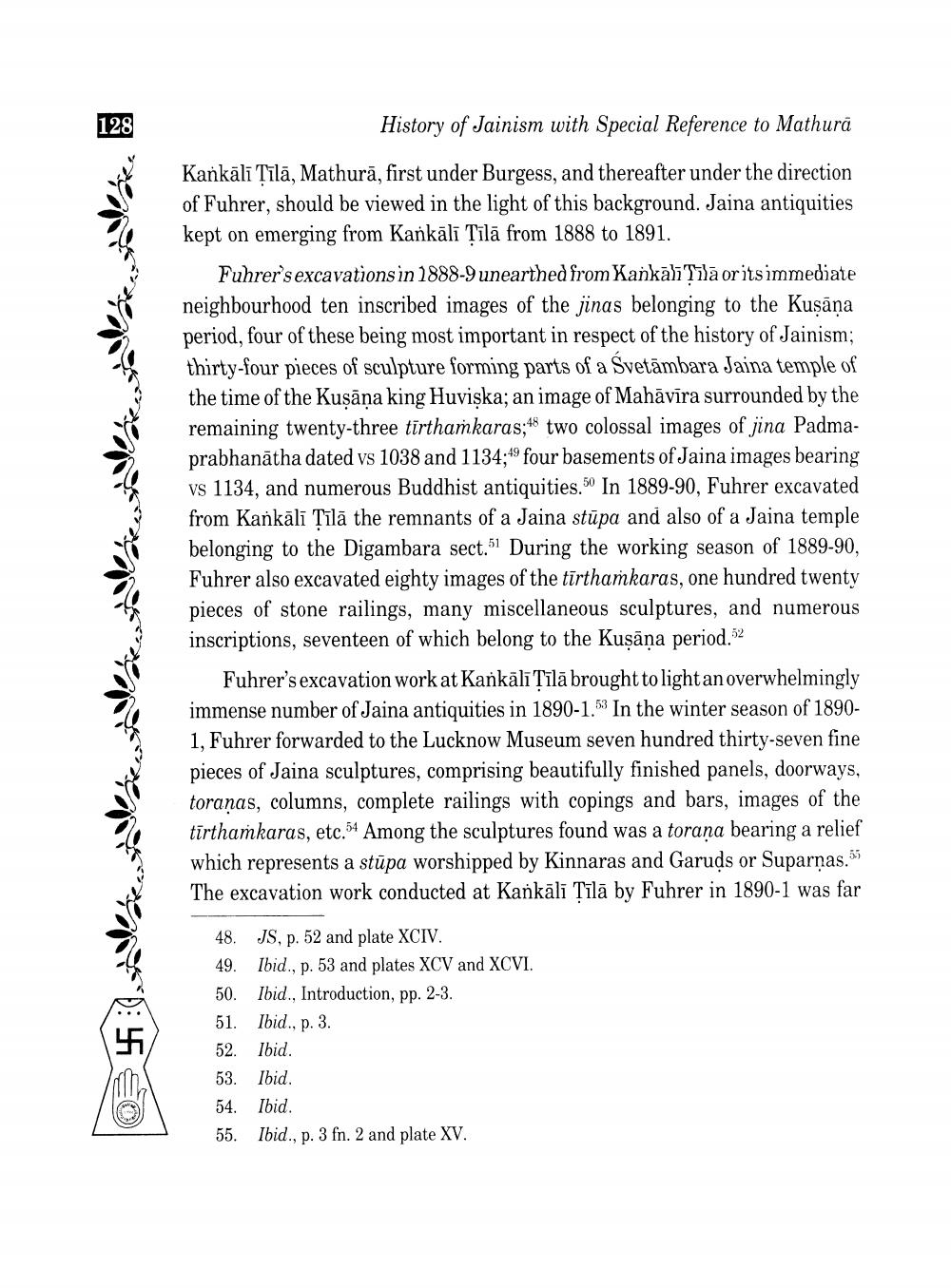________________
128
History of Jainism with Special Reference to Mathura
Kankālī Tīlā, Mathurā, first under Burgess, and thereafter under the direction of Fuhrer, should be viewed in the light of this background. Jaina antiquities kept on emerging from Kankāli Tilā from 1888 to 1891.
Fuhrer's excavations in 1888-9 unearthed from Xankā)īTilā oritsimmediate neighbourhood ten inscribed images of the jinas belonging to the Kuşāņa period, four of these being most important in respect of the history of Jainism; thirty-four pieces of sculpture forming parts of a Svetāmbara Jaina temple of the time of the Kuşāņa king Huviska; an image of Mahāvīra surrounded by the remaining twenty-three tirthařkaras;48 two colossal images of jina Padmaprabhanātha dated vs 1038 and 1134;49 four basements of Jaina images bearing vs 1134, and numerous Buddhist antiquities.50 In 1889-90, Fuhrer excavated from Kankālī Tīlā the remnants of a Jaina stūpa and also of a Jaina temple belonging to the Digambara sect.51 During the working season of 1889-90, Fuhrer also excavated eighty images of the tīrthamkaras, one hundred twenty pieces of stone railings, many miscellaneous sculptures, and numerous inscriptions, seventeen of which belong to the Kusāna period.52
Fuhrer's excavation work at Kankālī Tīlā brought to light an overwhelmingly immense number of Jaina antiquities in 1890-1.63 In the winter season of 18901, Fuhrer forwarded to the Lucknow Museum seven hundred thirty-seven fine pieces of Jaina sculptures, comprising beautifully finished panels, doorways, toraņas, columns, complete railings with copings and bars, images of the tīrthamkaras, etc.54 Among the sculptures found was a torana bearing a relief which represents a stūpa worshipped by Kinnaras and Garuds or Suparņas.“ The excavation work conducted at Kankāli Tīlā by Fuhrer in 1890-1 was far
48. JS, p. 52 and plate XCIV. 49. Ibid., p. 53 and plates XCV and XCVI. 50. Ibid., Introduction, pp. 2-3. 51. Ibid., p. 3. 52. Ibid. 53. Ibid. 54. Ibid. 55. Ibid., p. 3 fn. 2 and plate XV.




